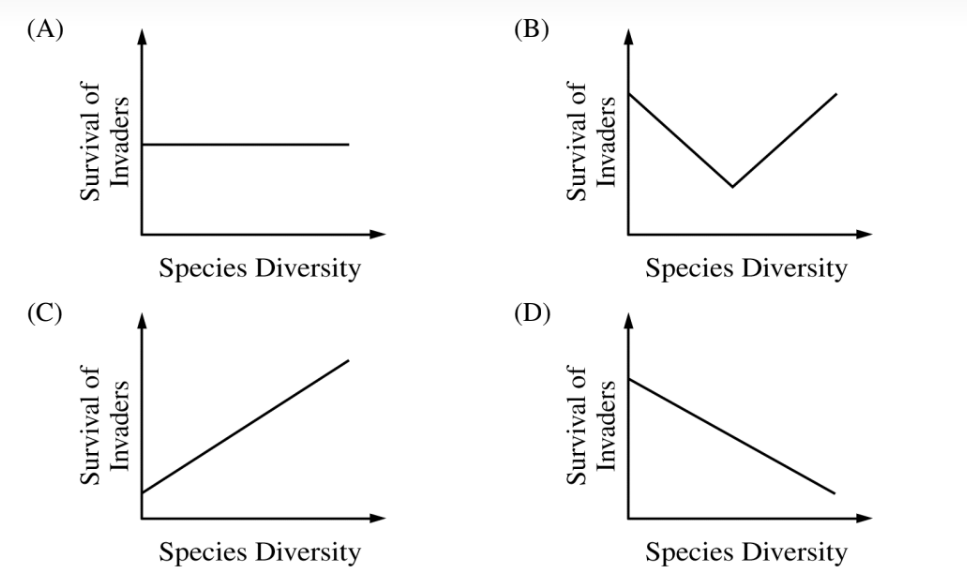Question.
Which of the following best explains why many different species can live together within an ecosystem with limited resources?
(A) Each species lives in a slightly different habitat.
(B) Each species occupies a different niche.
(C) Each species inhabits a different biome.
(D) Each species makes up a different population.
(E) Each species functions at a different trophic level.
Answer/Explanation
Ans:B
Question
A researcher is investigating the relationship between the existing species diversity in a community and the ability of an introduced nonnative species to destabilize the community. Which of the following graphs is most consistent with the claim that communities with high diversity are more resistant to change than are communities with low diversity?

Answer/Explanation
Ans:D
Question
Which of the following habitats contain the most bryophytes?
(A) Deciduous forests
(B) Deserts
(C) Ponds
(D) Oceans
(E) Grassland
Answer/Explanation
:A
Question
Permafrost; temperatures range from approximately -50° C to +25° C; a growing season of 60 days or less.
A. Tropical rain forest
B. Taiga
C. Artic tundra
D. Temperate grassland
E. Desert
Answer/Explanation
Ans:C